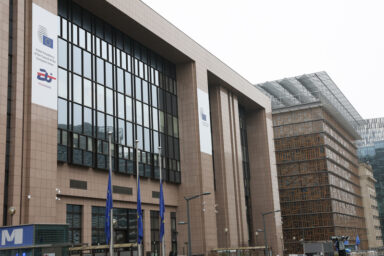The EU’s new Mediterranean Pact promises partnership and shared responsibility. Yet analysts warn it could quickly slip into a mere transactional bargain that risks repeating past mistakes and eroding trust on both sides of the sea.
The new Pact for the Mediterranean, presented recently by the European Commission, is a non-binding communication that aims to reinvigorate Euro-Mediterranean relations and outline a vision for a “Common Mediterranean Space”. Politically, the document represents an attempt to offer a holistic view of migration and asylum, while leaving wide discretion to both EU member states and partner countries. As Helena Hahn, analyst at the European Policy Centre, explained to EU Perspectives, the Pact “does not seek to replace existing cooperation frameworks but rather to complement them through a broader vision”. Trasparency of information and financial resources are essential to make the Pact credible and valuable.
Two angles
The Pact of the Mediterranean tackles migration from two angles. Human development with new opportunities for student mobility, as well as labour pathways for different skill levels, is one. The other is migration management, including “investment in local asylum capacities, strengthened return and readmission cooperation, border management, and the implementation of Talent Partnerships”, said Ms Hahn.
Plus, there is another crucial aspect concerns protection for vulnerable migrants and asylum seekers, with a whole-of-route approach that could lead to more targeted support for people on the move. Ultimately, Ms Hahn notes, “much will come down to political prioritisation by member states.” In particular, to ensure buy-in and to live up to the expectations set out in the Pact, “it will be important to follow through on legal migration and skills-related plans. Existing bilateral EU agreements with several Southern Mediterranean countries already provide for a framework for migration management cooperation” also merit consideration, she said.
The Pact’s scope is “ambitious”, presenting a comprehensive framework for cooperation with third countries based on three pillars: human and economic development, (civil) preparedness and security, and migration management. Because the region it covers stretches to Turkey and the Gulf, each country will likely handle the issues somewhat differently.
You might be interested
Ambitions and priorities
As to the Global Gateway, Ms Hahn points out, “It will be crucial to have publicly accessible information on the types of projects jointly implemented, to monitor and assess the level of ambition behind the Pact.” At the heart of its success will be the principle of co-ownership, ensuring shared responsibility between the EU and partner countries. Yet, she warns, if a transactional logic prevails—migration control in exchange for economic investment—it could undermine the eye-level cooperation the Pact envisions.
Much will depend on the political prioritization by member states and on the resources that are mobilized – Helena Hahn (European Policy Centre)
The real test of the success of the Pact will come with the mobilisation of financial resources. It will indicate the Pact’s potential compared to other mechanisms such as bilateral EU deals, member-state cooperation, or even the future Solidarity Pool. Only then will it become clear whether the Pact signals a genuine opening in migration management or merely another balancing act between security and solidarity.





